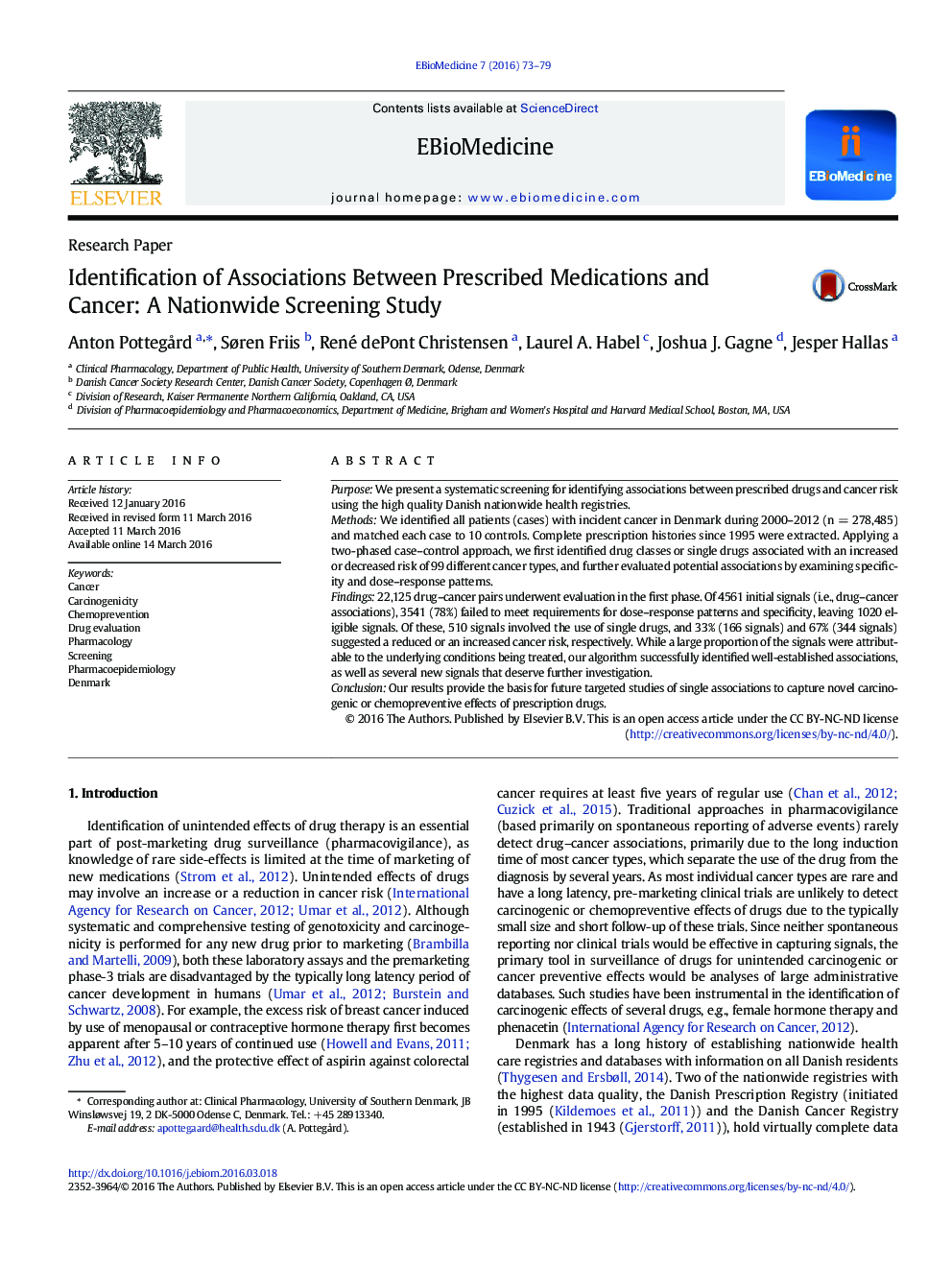| کد مقاله | کد نشریه | سال انتشار | مقاله انگلیسی | نسخه تمام متن |
|---|---|---|---|---|
| 2120830 | 1546892 | 2016 | 7 صفحه PDF | دانلود رایگان |
• We conducted a nationwide register-based screening study aimed at identifying potential drug–cancer associations.
• Screening initiatives using registry data may serve as an important tool for identification of drug–cancer associations.
• Future research should address the signals provided by our study, i.e. in studies of the single putative associations.The use of prescription drugs may influence the risk of developing cancer. In this study, we sought to identify such effects by combining data from Danish nationwide health care registries on drug use and cancer occurrence. We compared drug use among 278,485 cancer patients to use among cancer-free control individuals. Thereby, we identified 1020 putative drug–cancer associations. Future research should address the signals provided by our study, either as studies focusing on single associations or as a replication of our study using other data sources.
PurposeWe present a systematic screening for identifying associations between prescribed drugs and cancer risk using the high quality Danish nationwide health registries.MethodsWe identified all patients (cases) with incident cancer in Denmark during 2000–2012 (n = 278,485) and matched each case to 10 controls. Complete prescription histories since 1995 were extracted. Applying a two-phased case–control approach, we first identified drug classes or single drugs associated with an increased or decreased risk of 99 different cancer types, and further evaluated potential associations by examining specificity and dose–response patterns.Findings22,125 drug–cancer pairs underwent evaluation in the first phase. Of 4561 initial signals (i.e., drug–cancer associations), 3541 (78%) failed to meet requirements for dose–response patterns and specificity, leaving 1020 eligible signals. Of these, 510 signals involved the use of single drugs, and 33% (166 signals) and 67% (344 signals) suggested a reduced or an increased cancer risk, respectively. While a large proportion of the signals were attributable to the underlying conditions being treated, our algorithm successfully identified well-established associations, as well as several new signals that deserve further investigation.ConclusionOur results provide the basis for future targeted studies of single associations to capture novel carcinogenic or chemopreventive effects of prescription drugs.
Journal: EBioMedicine - Volume 7, May 2016, Pages 73–79
